What’s symmetry in images? And how are you going to use it for wonderful compositions?
On this article, I’ll share with you all the things it’s good to learn about symmetry.
I’ll take you thru the various kinds of symmetry and other ways to make use of symmetry, and I’ll share loads of suggestions and tips alongside the best way.
Are you able to grow to be a symmetry professional?
Then let’s get began!
What Is Symmetry in Pictures?
Symmetry in images is when two components of a picture are reflections of each other. When symmetry is utilized in photographic compositions, it ends in a powerful, in-your-face impact, because of the 2 picture halves that stretch outward from the purpose of reflection.

Observe that not all symmetry requires a excellent reflection throughout a degree or line of symmetry. You may create lovely compositions utilizing solely near-symmetry (the place the 2 halves of the symmetrical composition are solely comparable, somewhat than equivalent).
Symmetry is a well-liked compositional gadget, one which you should utilize for beautiful photographs. However it’s a must to watch out; an excessive amount of symmetry, and you’ll find yourself creating a picture that’s static and, nicely, boring.

Kinds of Symmetry in Pictures
Symmetry in photographic composition will be boiled down to a few broad classes:
Vertical symmetry.
Horizontal symmetry.
And radial symmetry.
Every of those choices will give your photographs a distinct really feel, which is why I extremely suggest you discover ways to apply all of them when capturing.
Now let’s check out the various kinds of symmetry, beginning with:
1. Vertical Symmetry
Vertical symmetry refers to a mirrored image throughout a vertical (that’s, an up/down) line.
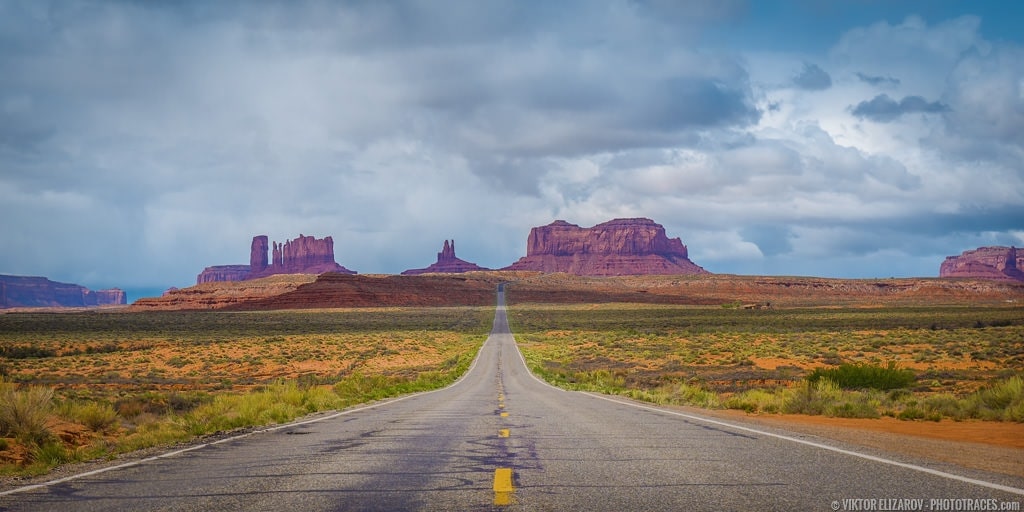
So a photograph of an individual trying right into a mirror would present vertical symmetry.
Similar with an individual trying right into a reflective automobile window, or a mirrored image on a glass constructing, or a mirrored image in an individual’s sun shades.
After all, vertical symmetry doesn’t need to happen within the type of a normal reflection. You may have buildings with equivalent halves (and could possibly be cut up down the center for clear vertical symmetry). Even most portrait photographs embrace some type of vertical symmetry, as a result of people are vertically symmetrical!
And as I defined in a earlier part, symmetry doesn’t need to be excellent. You may all the time have near-symmetry – equivalent to two individuals standing throughout from each other – and nonetheless get a robust compositional impact.
2. Horizontal Symmetry
Horizontal symmetry is the alternative of vertical symmetry:
As a substitute of reflecting throughout a vertical line, it displays throughout a horizontal one.
So a photograph of a mountain above a reflecting lake could be an instance of horizontal symmetry.
The truth is, reflections in water are a very widespread sort of horizontal symmetry, one that you just’ll see on a regular basis in panorama images.
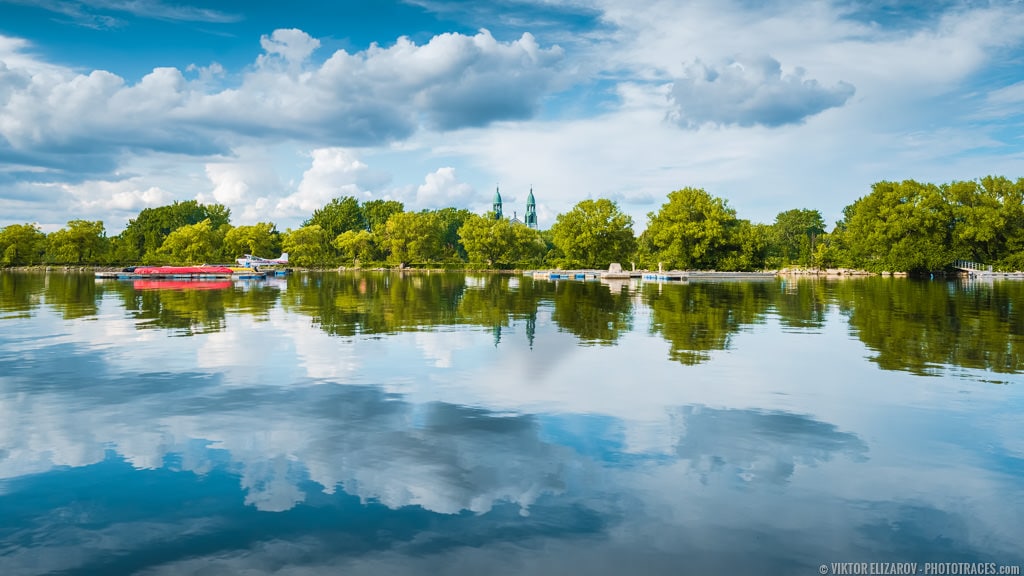
And avenue photographers love to make use of puddles of water to create attention-grabbing horizontal reflections for his or her mind-bending city photographs.
3. Radial Symmetry
Radial symmetry is created by reflections that stretch in a circle round a selected level.
So as a substitute of getting a line of symmetry, throughout which a picture is mirrored…
…a radially symmetrical picture may have a circle of symmetry, equivalent to in a photograph of a starfish, the place the arms are radially symmetrical.
Observe that radial symmetry might be the rarest of the three forms of symmetry. Nevertheless it additionally affords probably the most highly effective impact, as a result of it concentrates the symmetry and forces the viewer to essentially discover the composition.

Flower facilities supply radial symmetry, as do many vegetation. Typically, it’s doable to create a powerful composition just by placing a radially symmetrical topic smack-dab within the heart of your picture. The radial symmetry will maintain the picture attention-grabbing, and the general impact will make your topic pop.
However whereas radial symmetry is widespread in macro images and avenue images, it’s powerful to seek out radially symmetrical constructions in panorama or portrait images.
Symmetry in Panorama Pictures
Panorama images is filled with alternatives to make use of symmetry.
You simply need to know the place to look!
Initially, there’s vertical symmetry. You may usually discover this in mountains, which will be divided in two to create a symmetrical composition. The identical is true of ocean pictures; you possibly can usually discover symmetrical foreground topics, equivalent to a wonderful rock, which might lead the attention to the (nonetheless symmetrical) background.
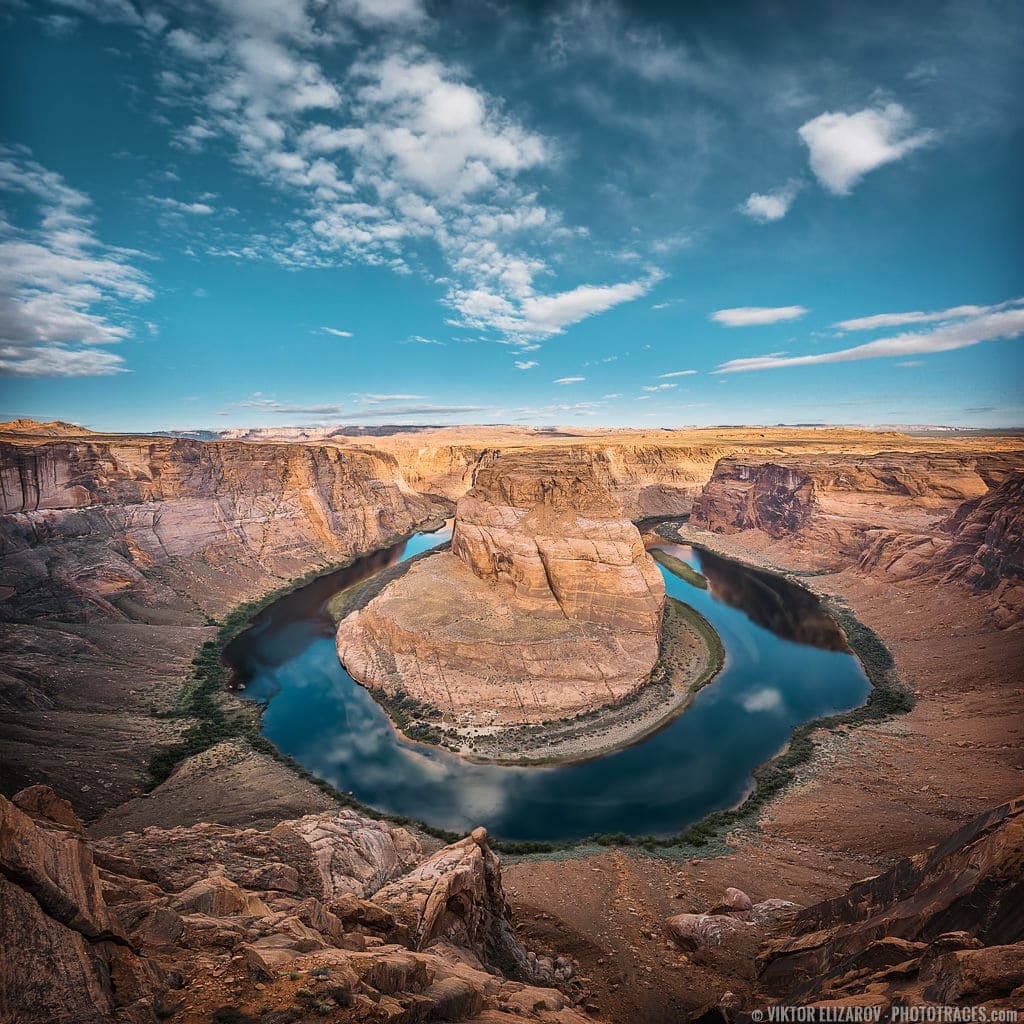
Second, there’s horizontal symmetry. Panorama photographers all the time incorporate water reflections into their photographs, which ends up in lovely horizontal symmetry. Observe which you can usually get lovely horizontal symmetry at daybreak when the wind is low, and the water remains to be for one of the best reflections.
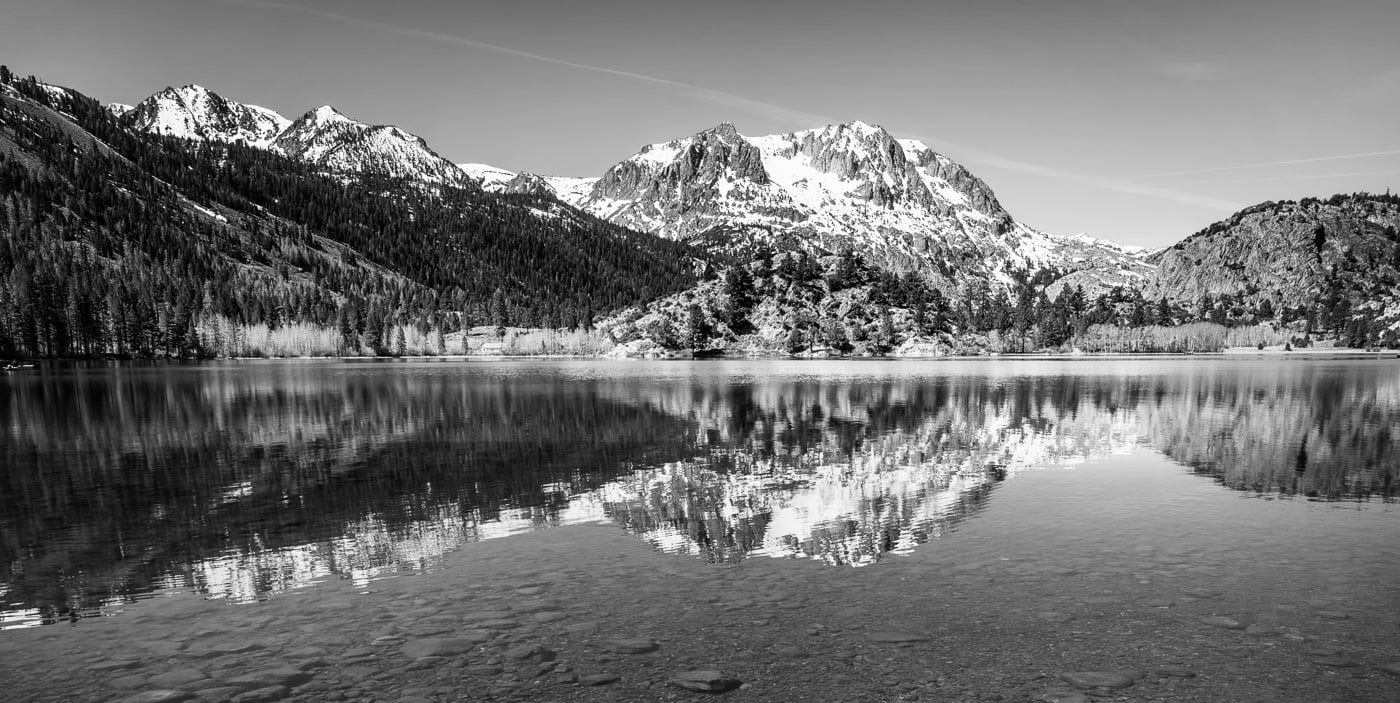
Third, there’s radial symmetry. Whereas that is more durable to seek out in panorama images, you’ll often run into radially symmetrical topics, equivalent to rocks, rock constructions, vegetation, and extra.
Symmetry in Architectural Pictures
It’s powerful to seek out radial symmetry in architectural scenes.
In any case, architectural images principally simply entails buildings, and buildings are hardly ever round or star-shaped!
Nevertheless, there’s loads of different symmetry in structure to play with.
For one, you could find vertical symmetry in all places in buildings. Nearly each constructing is vertically symmetrical, so it’s doable to create compositions that place a constructing entrance and heart, emphasizing the road of symmetry for nice outcomes.
By the best way, you usually have a alternative:
Place the road of symmetry within the lifeless heart of the picture, or place it off to the facet (usually alongside a rule of thirds gridline).
For those who place the road of symmetry within the lifeless heart of the picture, you’ll usually find yourself with a really intense, aggressive composition.

Whereas in the event you place the road of symmetry on a rule of thirds gridline, the ultimate picture will probably be extra tame.
Which is greatest?
That’s as much as you, because the photographer! However each can look good.
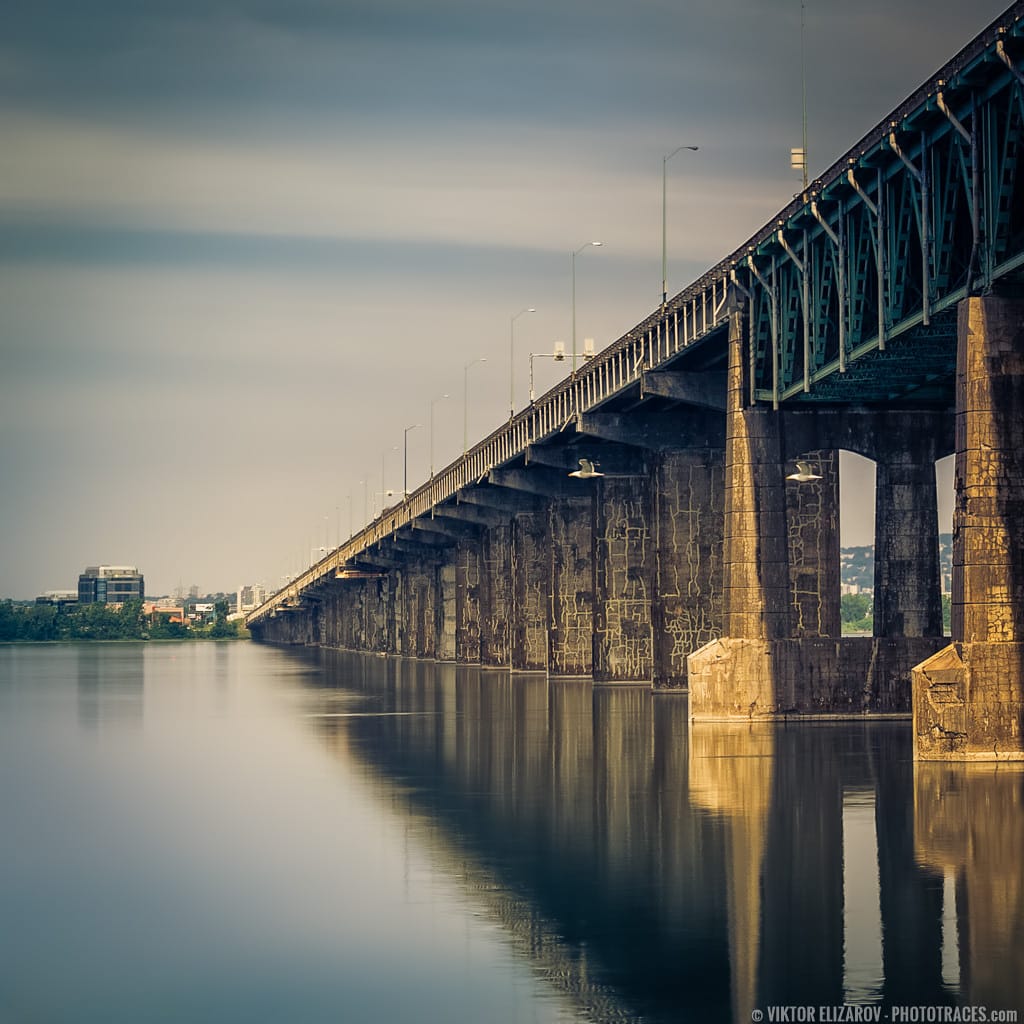
As for horizontal symmetry:
You undoubtedly can discover it in architectural images, equivalent to when photographing a constructing above a reflective river.

Simply maintain a watch out for vertical and horizontal symmetry when capturing structure, and also you’re certain to seek out some stellar compositions.
Symmetry in Portrait Pictures
As I discussed above, most portrait images entails vertical symmetry just because people are vertically symmetrical.
It’s also possible to create vertical symmetry by positioning two individuals subsequent to 1 one other (the road of symmetry runs vertically between their our bodies).
Horizontal symmetry is far more uncommon in portrait images, although in the event you place your topic above reflective water or above a reflective automobile hood, you possibly can simply create a horizontally symmetrical composition.
And, in portrait images, radial symmetry is sort of inconceivable to seek out.
Suggestions for Utilizing Symmetry in Panorama Pictures
For those who’re trying to boost your panorama photographs with symmetry, right here’s what I like to recommend you do:
First, take into account whether or not to place the symmetry line within the shot’s heart or off to the facet. A centered composition tends to be extra highly effective, whereas an off-center composition tends to really feel extra dynamic. Each can work, however it’s best to all the time concentrate on the place you place your symmetry line and its penalties.

Second, take into consideration whether or not you possibly can rigorously break the symmetry. This could usually result in a really cool consequence, as the complete composition will present symmetry – aside from a single level.
As an example, you would possibly {photograph} a mountain mirrored on water, however with a single hen flying by to interrupt the symmetry on the high.
Does that make sense?
Finally, one of the best symmetrical pictures usually come about by experimentation – so when you’ve discovered some beautiful symmetry, don’t be afraid to mess around with totally different compositions!

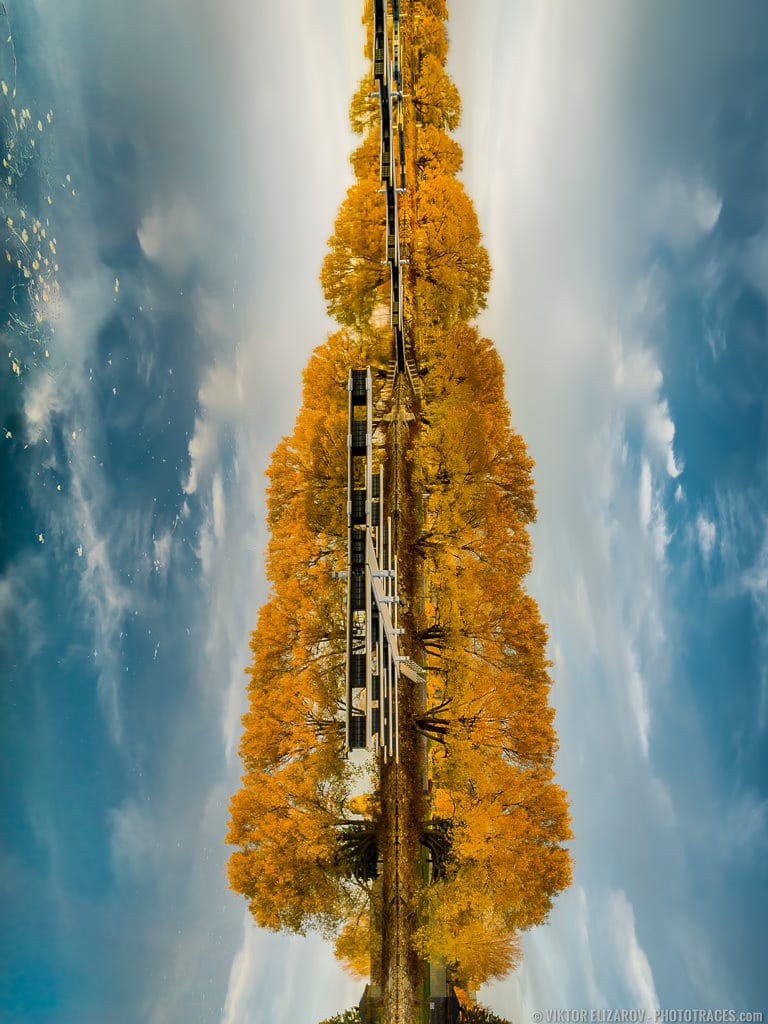
Symmetry vs Rule of Thirds
Symmetry brings to thoughts static, centered photographs.
Whereas the rule of thirds requires key parts to be positioned a 3rd of the best way into the body.
Nevertheless…
Whereas symmetry and the rule of thirds are likely to purpose in reverse instructions…
It’s doable to make use of each collectively.
As I discussed above, you possibly can really place a vertical (or horizontal) line of symmetry alongside a rule of thirds gridline.

And in the event you’re coping with radial symmetry, you possibly can place it at a rule of thirds energy level!
That means, you possibly can reap the benefits of each symmetry and the rule of thirds.
Finally, you possibly can mix symmetry with totally different guidelines of composition and rules of images.
Symmetry in Pictures | Conclusion
Now that you just’ve completed this text, you understand all about symmetry in images.
And you know the way it may be used for beautiful outcomes.
So, subsequent time you’re out capturing, don’t be afraid to check out some symmetrical compositions.
You’ll get beautiful outcomes!
